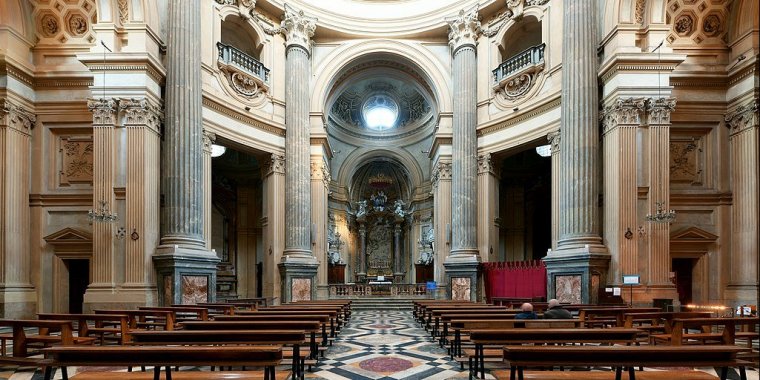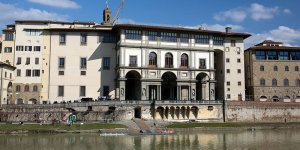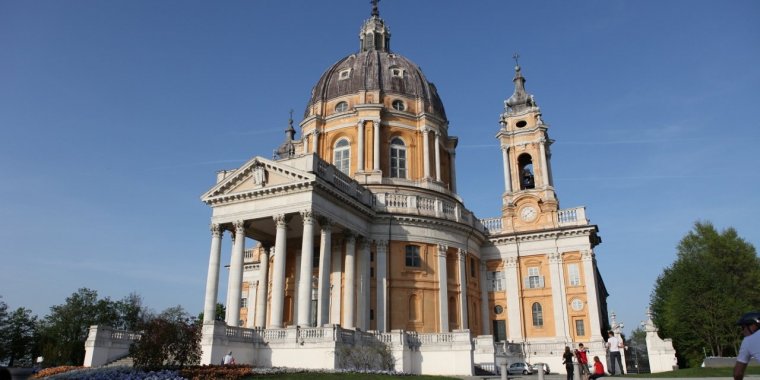| Published in Attractions / Places of Interest |
Basilica of Superga (Basilica di Superga), Turin, Italy
The Basilica of Superga (Basilica di Superga) is a church in the vicinity of Turin. It was built from 1717 to 1731 for Victor Amadeus II of Savoy, designed by Filippo Juvarra, at the top of the hill of Superga. This fulfilled a vow the duke (and future King of Sardinia) had made during the Battle of Turin, after defeating the besieging French army in the War of the Spanish Succession. The architect alluded to earlier styles while adding a baroque touch.
The church contains the tombs of many princes and kings of the House of Savoy, including the Monument to Carlo Emanuele III (1733) by Ignazio Collino and his brother Filippo. Under the church are the tombs of the Savoy family, including most of its members (among them, Charles Albert).
This church by Juvarra is considered late Baroque-Classicism. The dome was completed in 1726 and resembles some elements of Michelangelo's dome at St. Peter's Basilica. This is no coincidence as Juvarra studied and worked in Rome for ten years prior to working in Turin. The temple front protrudes from a dome structure citing the Pantheon.
The temple front is larger than typical proportions because the Superga is set upon this hill. It is also believed that Victor Amadeus wanted the basilica to rest on this hill as reminder of the power of the Savoy family as well as continue a line of sight to the existing Castle of Rivoli. Later, the Palazzina di caccia of Stupinigi completed the triangle between the three residences of Savoy.

Basilica di Superga - Interior. ![]()
The history of the church can be traced to 2 September 1706, when Duke Victor Amadeus II of Savoy and the Prince of Carignano, Eugene of Savoy climbed the hill to see Turin besieged by Franco-Spanish forces during the War of the Spanish Succession. Victor Amadeus, having knelt down in front of an old prop, swore that, in case of victory, he would have a monument built to our Lady (the Virgin Mary).
From dawn until the early hours of the afternoon of 7 September the armies clashed in the fields at Jaya and Madonna di Campagna. Piedmontese armies achieved victory over the French. The entrance of the basilica with its portico supported by eight columns. Vittorio Amedeo was crowned King of Sicily. He entrusted the design of this building to Filippo Juvarra.
The Royal crypt is the traditional burial place of members of the House of Savoy.
Info
Address: Str. Della Basilica di Superga, 73, 10132 Torino.
Admission: The Basilica is free entry. The Royal Tombs and the Royal Apartment 5 euro. The Dome 3 euro.
Opening times:
• The Royal Tombs and the Royal Apartment:
SUMMER (from March 1st to October 31th): From Monday to Sunday: 10:00 A.M. – 7:00 P.M. (last entrance 6:15 P.M.) Closed on Wednesday.
WINTER (from November 1st to February 28th): Saturday, Sunday and Holidays: 10:00 A.M. – 6:00 P.M. (last entrance 5:15 P.M.). Special openings during Christmas Holidays from December 25th to January 6th.
• The Dome
SUMMER (from March 1st to October 31th): From Monday to Sunday: 10:00 A.M. – 7:00 P.M. (last entrance 6:40 P.M.) Closed on Wednesday and in case of bad weather. The dome is open at night in summer.
WINTER (from November 1st to February 28th): Open from December 25th to January 6th.
— from Monday to Friday: 10.00 a.m. – 5.00 p.m. (last entrance 4,40 p.m.)
— Saturday: 9.30 a.m. – 5.00 p.m. (last entrance 4,40 p.m.)
— Sunday: 12.45 a.m. – 5.00 p.m. (last entrance 4,40 p.m.)
Sources
• www.wikipedia.org
• www.basilicadisuperga.com
YOU MAY ALSO LIKE





 If you own or manage a travel-related business such as a hotel, a bed-and-breakfast, a restaurant, a pub or a cafeteria, you can create a web page for your business for free on Titi Tudorancea Travel Info. » |


